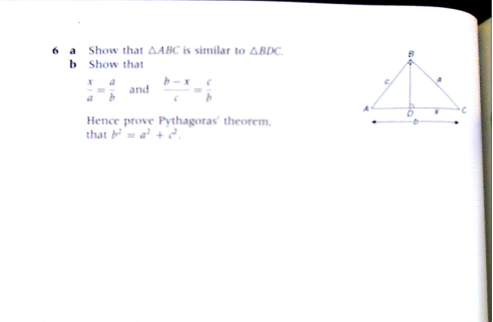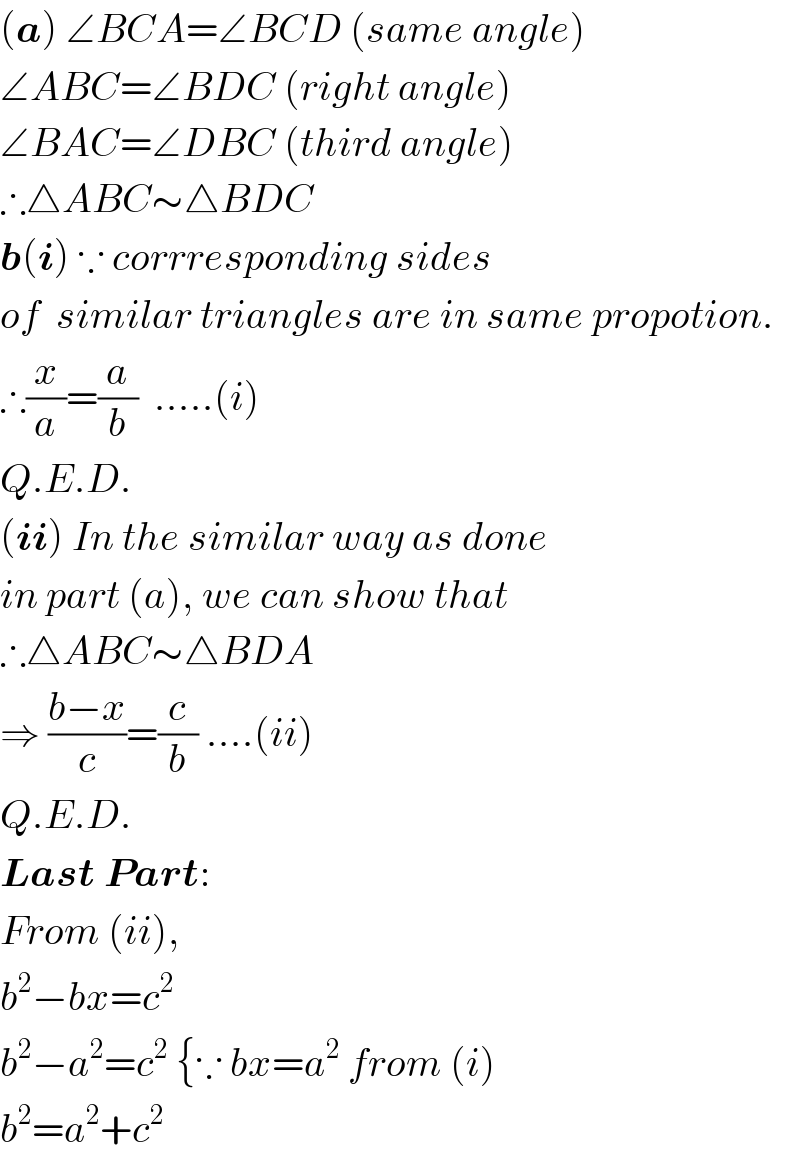Question Number 44088 by peter frank last updated on 21/Sep/18

Answered by $@ty@m last updated on 21/Sep/18

$$\left(\boldsymbol{{a}}\right)\:\angle{BCA}=\angle{BCD}\:\left({same}\:{angle}\right) \\ $$$$\angle{ABC}=\angle{BDC}\:\left({right}\:{angle}\right) \\ $$$$\angle{BAC}=\angle{DBC}\:\left({third}\:{angle}\right) \\ $$$$\therefore\bigtriangleup{ABC}\sim\bigtriangleup{BDC} \\ $$$$\boldsymbol{{b}}\left(\boldsymbol{{i}}\right)\:\because\:{corrresponding}\:{sides}\: \\ $$$${of}\:\:{similar}\:{triangles}\:{are}\:{in}\:{same}\:{propotion}. \\ $$$$\therefore\frac{{x}}{{a}}=\frac{{a}}{{b}}\:\:…..\left({i}\right) \\ $$$${Q}.{E}.{D}. \\ $$$$\left(\boldsymbol{{ii}}\right)\:{In}\:{the}\:{similar}\:{way}\:{as}\:{done} \\ $$$${in}\:{part}\:\left({a}\right),\:{we}\:{can}\:{show}\:{that} \\ $$$$\therefore\bigtriangleup{ABC}\sim\bigtriangleup{BDA} \\ $$$$\Rightarrow\:\frac{{b}−{x}}{{c}}=\frac{{c}}{{b}}\:….\left({ii}\right) \\ $$$${Q}.{E}.{D}. \\ $$$$\boldsymbol{{Last}}\:\boldsymbol{{Part}}: \\ $$$${From}\:\left({ii}\right), \\ $$$${b}^{\mathrm{2}} −{bx}={c}^{\mathrm{2}} \\ $$$${b}^{\mathrm{2}} −{a}^{\mathrm{2}} ={c}^{\mathrm{2}} \:\left\{\because\:{bx}={a}^{\mathrm{2}} \:{from}\:\left({i}\right)\right. \\ $$$${b}^{\mathrm{2}} ={a}^{\mathrm{2}} +{c}^{\mathrm{2}} \\ $$
